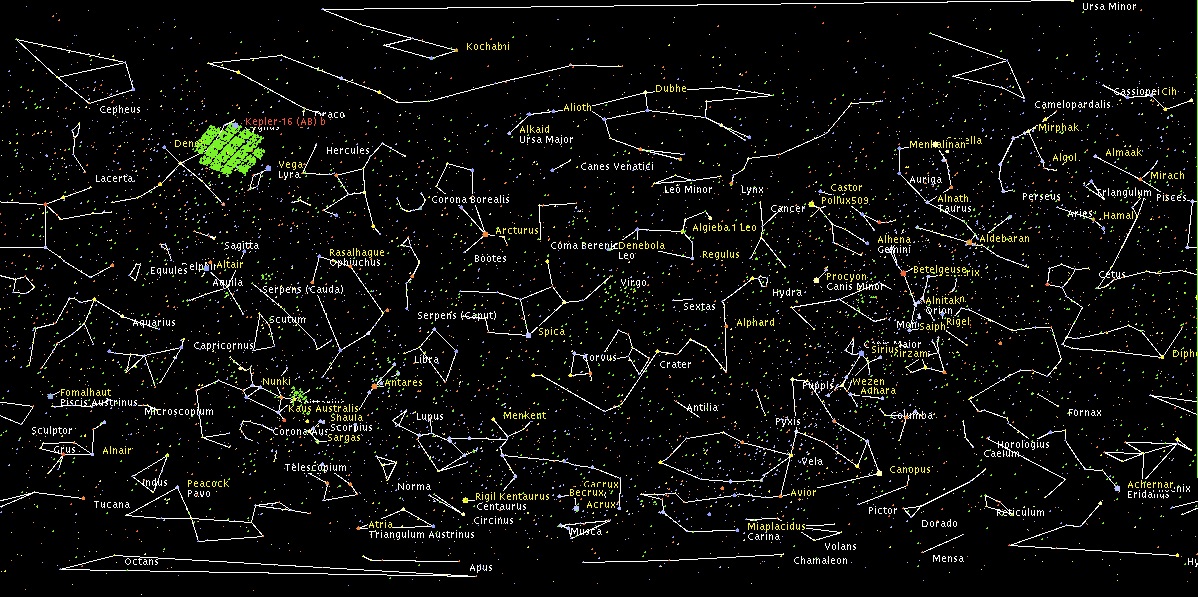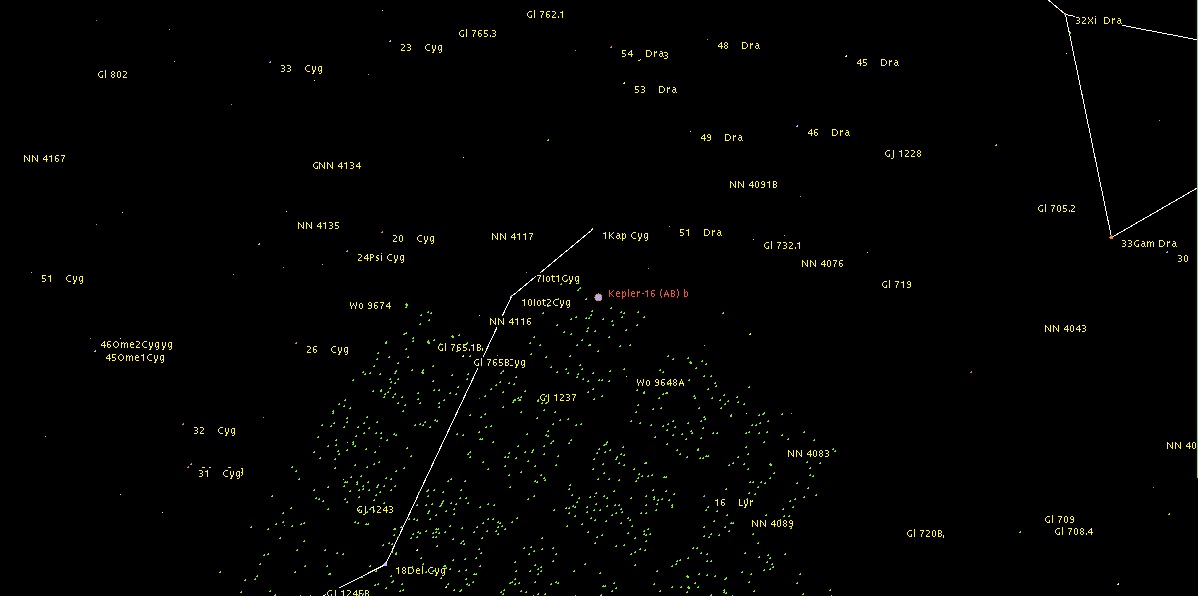Kepler-16b orbits the binary stars, a K-type Kepler-16A and an M-type Kepler-16B in the constellation Cygnus. Kepler-16b is the first object discovered orbiting a binary star. This means that two “suns” are visible from the surface of the planet. Its orbit is located at the outer edge of the habitable zone of the brighter star, Kepler-16A.
Kepler-16b has a radius of 8.5 times that of Earth and a mass of 105 times that of Earth. It is close to the size Saturn from our solar system, and is considered a gas giant. If it has a sufficient atmosphere, there is a possibility for life to occur.

(Credit: Shione Fujita & SGH Moriyama High School)
From this imaginary satellite, if you look into the sky, you will see Kepler-16b (the Saturn-like planet with rings) and two suns (Kepler-16(AB)) shining in the distance. It is interesting to think that life could be occurring on a “habitable moon,” which is unknown in our solar system, The landscape would be completely different than on Earth.
When Kepler-16b was first introduced at a research conference in the United States, the audience gave it a standing ovation. People thought that Luke Skywalker’s hometown of Tatooine, from the movie “Star Wars,” had finally been discovered! It was such a wonderful moment where science fiction caught up with reality.
Circumpolar planets have been discovered since then, and various studies are now being actively investigated, including the possibility of different ways of forming planets from single stars, and calculating more complex habitable zones. Since there are more binary stars in the universe than single stars, it is important to understand these binary planets.
(文責:藤田汐音・佐々木貴教)


(Kepler-16b in the ExoKyoto Stellar Window)
For more information about Kepler-16b, please visit:
http://www.exoplanetkyoto.org/exohtml/Kepler-16_(AB)_b.html


